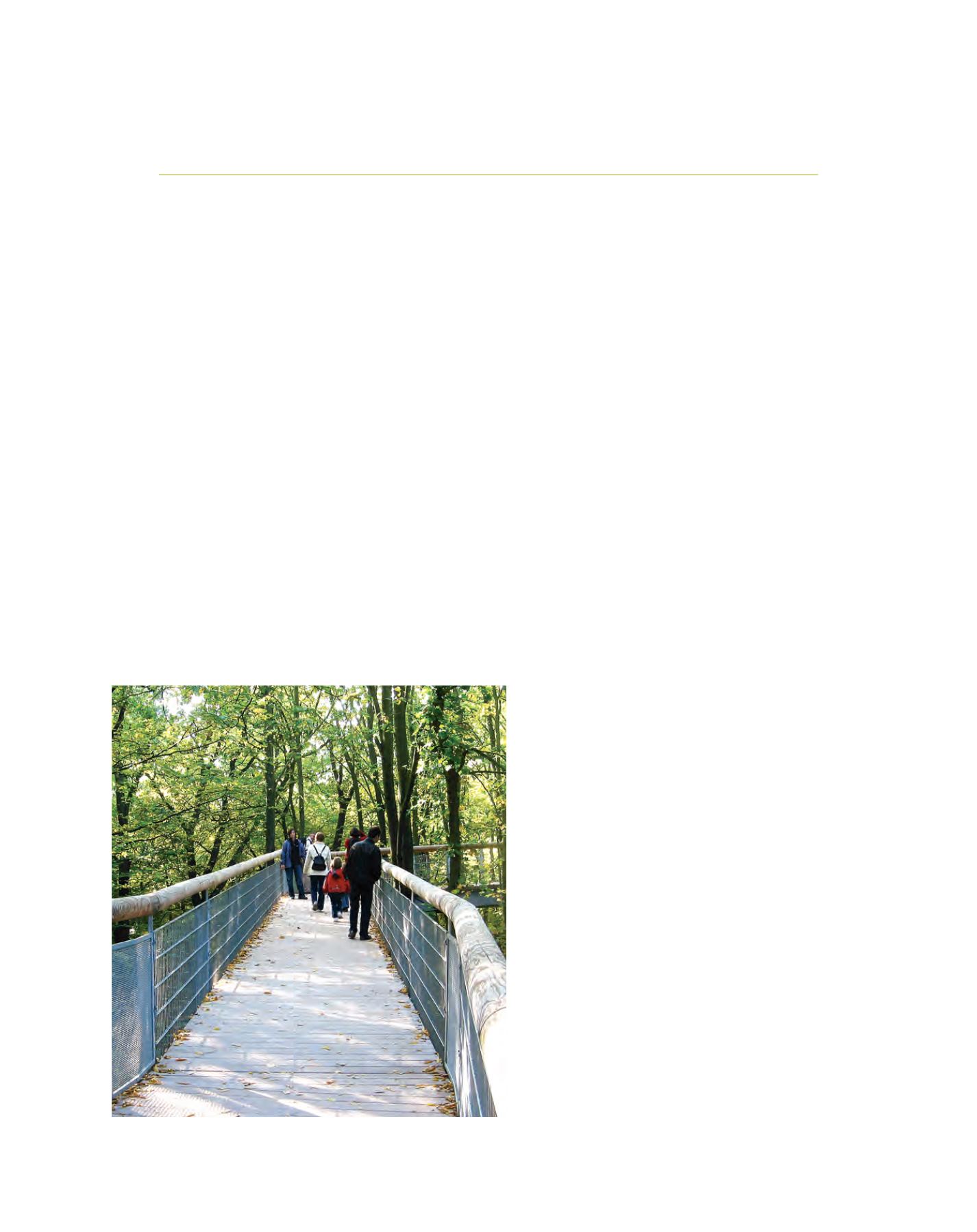

[
] 108
German forests – nature and economics
Matthias Schwoerer, European and International Forest Policy,
Federal Ministry of Food, Agriculture and Consumer Protection, Germany
G
ermany has about 11 million hectares of forests, cover-
ing one third of the country. The forested area has
increased by approximately 1 million hectares over the
past four decades. Timber stands in Germany account for 320
cubic metres per hectare, with the annual timber increment
totalling around 100 million m³ in accessible forests (approxi-
mately 10 m³ per hectare).
Forests are the result of a long history of human intervention reach-
ing back to the Middle Ages, when large areas of forest land were first
cleared for settlement or used for agricultural purposes. Since then,
forests have been changed and partly degraded by littering, tanning
and intensive use for livestock fodder and as an energy source, and
they were devastated on a large scale during and after the two world
wars. However, some forest areas have been cultivated and protected
for hunting and recreation and new forests have been established.
Without human intervention, beech forests would prevail in
Germany with 74 per cent coverage of the forest area. Over the course
of forest history and especially due to massive reforestation of agri-
cultural or devastated land, the tree species composition
has shifted to a higher percentage of coniferous trees. The
forest stands today are largely the result of the long-term
efforts of German foresters and forest owners to rebuild
high-yield, ecologically valuable forests. In the past few
decades, more importance has been attached to a site-
adapted and more natural tree species composition. While
spruce still accounts for the largest proportion among the
tree species, mixed stands make up 73 per cent of German
forests today. The oldest high-quality production forests
are more than 200 years old.
In 1713, Hans Carl von Carlowitz first came up
with his concept of sustainable forest management,
the spirit of which gave rise to modern forestry in
Germany and established the country’s reputation as
the cradle of sustainability. The concept of sustainable
forest management, which initially focused on timber,
was gradually developed and expanded to encompass
forest services. It is a living concept which has its prin-
ciples but also requires that those responsible listen and
respond to the evolving demands of society, taking new
scientific knowledge into account.
Germans traditionally have a close relationship with
their forests, which are a source of inspiration and the
setting of almost all fairytales. From the myths of the
ancient Germanic tribes through the paintings of the
Romantic artists to the present day, the forests are
inseparably linked with our culture. To understand the
social demands to which forestry has to react, one needs
to be aware that in Germany, anybody can access forests
for recreational purposes at virtually any time and place.
Today, forests play a key role in this densely populated,
industrialised country as places for recreation, tranquil-
ity and the restoration of physical and mental health.
Access is a right to which citizens are entitled, but it
also obliges them to act responsibly. Forest and nature
conservation legislation restricts access to certain areas
and there are bans on smoking and open fires.
Only 30 per cent of forests in Germany are owned by
the state. The remaining forests are owned by millions
of individuals and municipalities, as well as the church
and other institutions. There are currently around
4,300 forestry groups with more than 400,000 members
representing a total ownership of 3.8 million hectares of
forest. Participation is therefore largely concentrated on
policies, strategies and legislation on forests but is not
related to single management decisions. Many people in
In Germany, anybody can use the forests for recreational purposes
Image: vtI
















